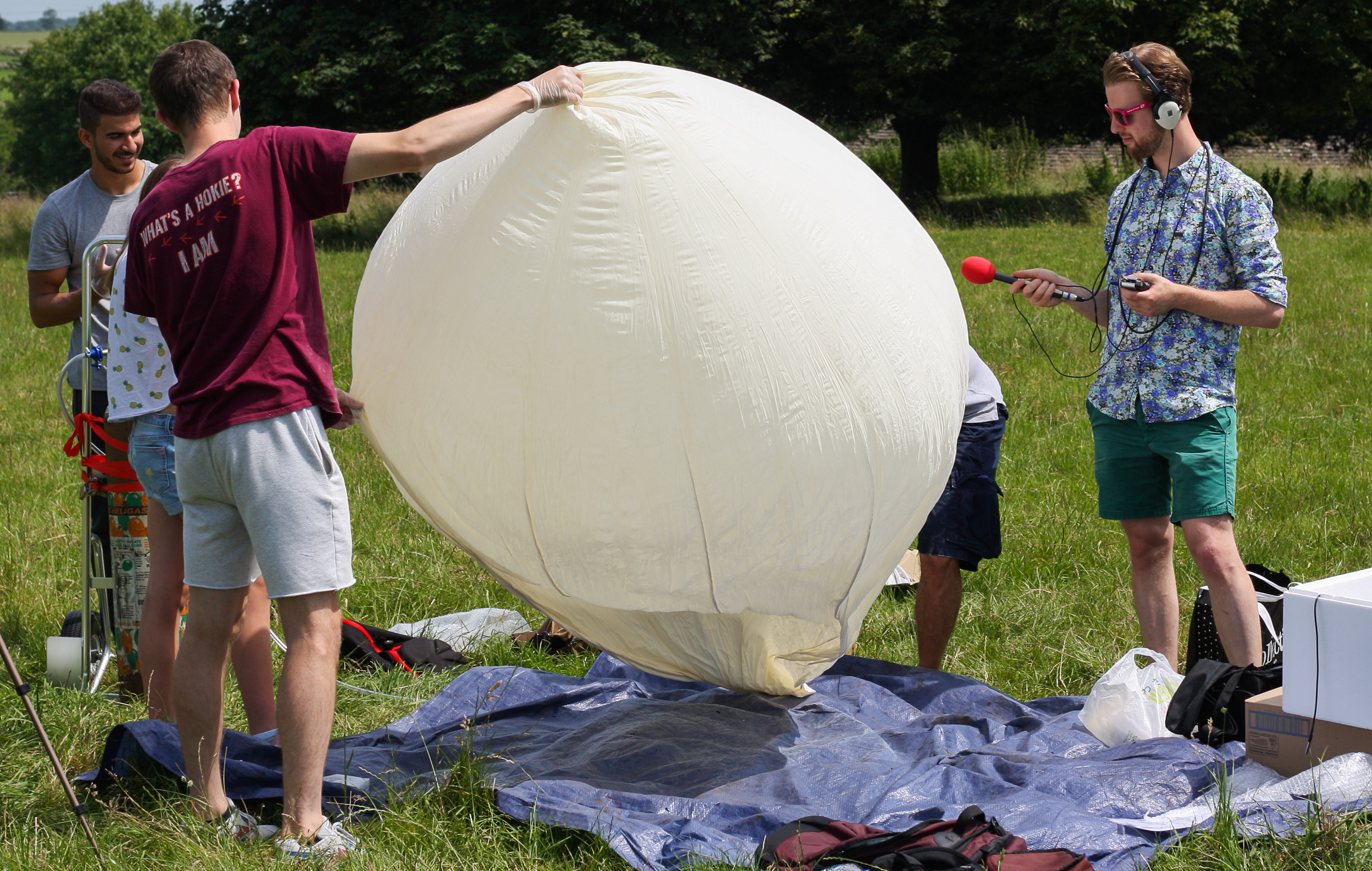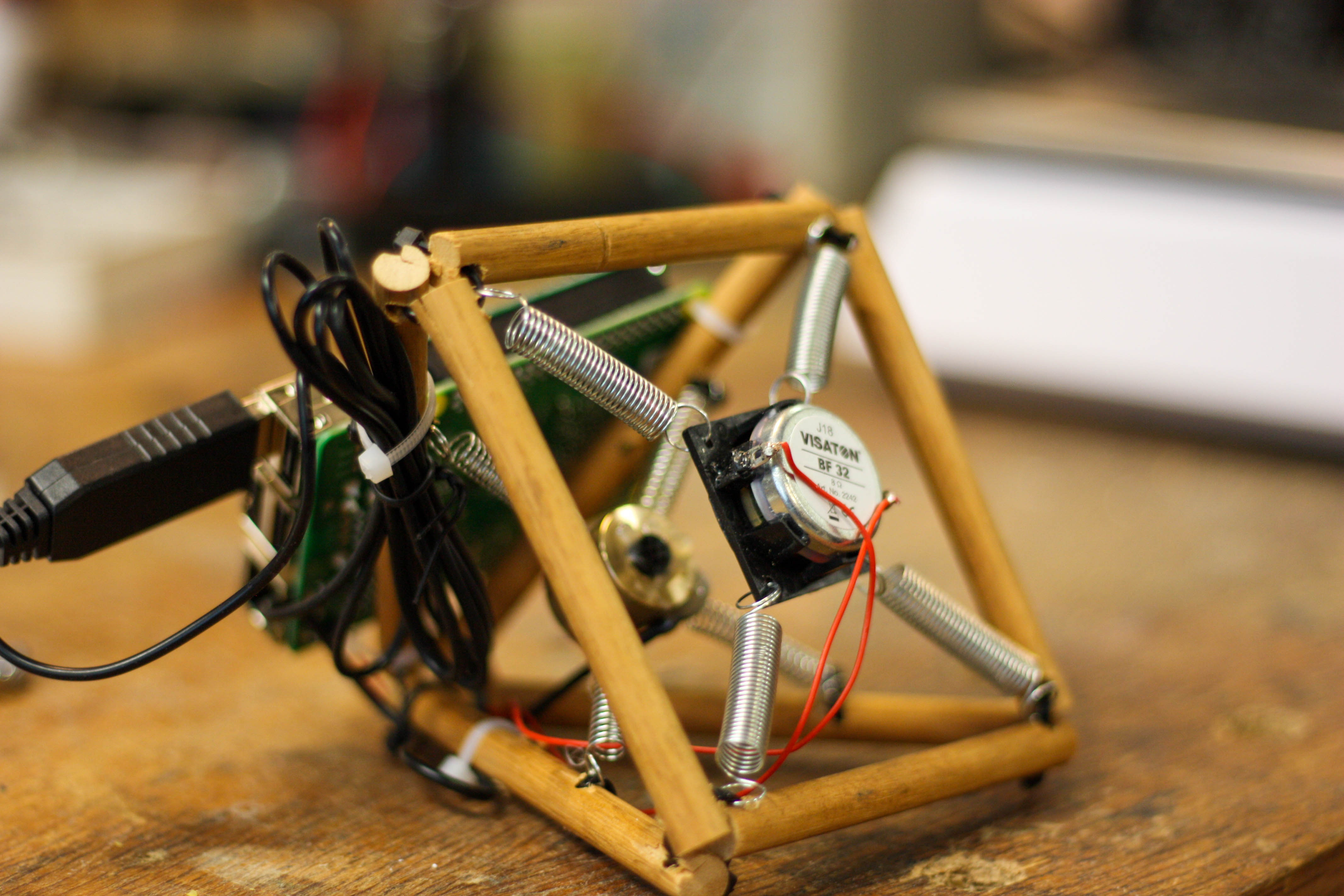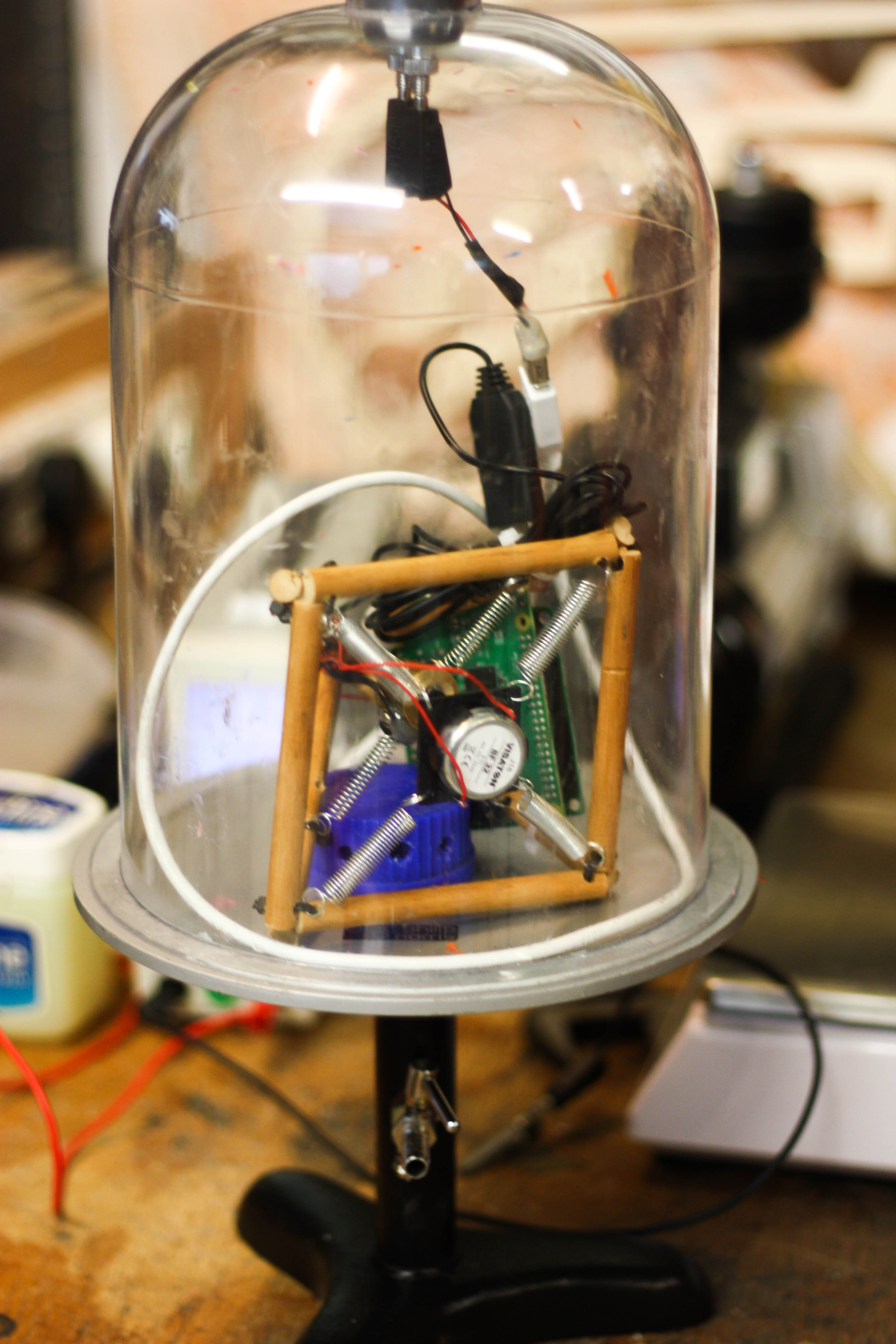5, 4, 3, 2, 1... Yes! We have lift off!
This is not how I normally spend an average Saturday morning. But this year, the 29th of June was different: from a farmer's field to the east of Bath, watched by a herd of sedate, cud-chewing cows, we had just sent a large helium-filled balloon and its payload soaring skywards destined for the edge of space.

We'd spent the last couple of months planning this. It all started with an email from Tim Pilgrim at the Brunel University press office. Omar Gad, One of their graduates, he reported, was planning on sending up a helium balloon to the edge of space at over 100,000 feet (30 kilometres) above the Earth. But, Omar wondered, rather than just take pictures from up there, would the Naked Scientists like to join in and suggest some experiments that we could do at altitude?

We're a radio programme and a podcast, so for this to work for us it would have to have some kind of sound or acoustic element to it, and ideally some way for the audience to become involved as well. A telecon or two later, and we hatched the plan to test the claim that "in space, no one can hear you scream". Veterans of the "Alien" era will recognise the famous strap-line used to promote the Ridley Scott blockbuster when it first came out. But what's the physics behind this claim, and is it even true? Moreover, has anyone ever actually tested this scientifically? We didn't think so, and even if they have, reproducibility is the new buzzword on the scientific block!
To do this properly, we needed to develop a system that would mechanically isolate a speaker and a microphone. If we merely stuck both into a box, vibrations from the speaker body could travel through the box material to the microphone, like the sonic equivalent of a short circuit. Knowing that local physics and engineering demo guru Dave Ansell loves a challenge like this, I called him up. His clever solution: a pyramid structure fashioned from wooden dowels joined at the ends with cable ties and with the speaker and microphone suspended from the vertices by springs and elastics. To damp the microphone even more, so that extraneous vibrations coming through the frame wouldn't move it, he embedded it in a hefty chunk of brass.

Admittedly, the first iteration of the apparatus wasn't perfect, but then that's what testing is for. The £8 microphone we bought off the Internet made more noise of its own than it picked up from the environment, so that was a non-starter. Thankfully, a costlier £80 model behaved better and was the item that we eventually sent aloft.
The next challenge to solve was how to play and record the audio in a standardised way during the ascent while simultaneously logging the altitude, air pressure and other parameters like the temperature. Cue Omar, who agreed to write the code for the Raspberry Pi we attached to the edge of Dave's sound device. We invited listeners to send in screams that they wanted played in space. The intention was to pick the best and mix them into a single sound file containing each scream played over a range of sound levels from very quiet to very loud.
The screams would be played out and recorded back by the computer every 5 minutes during the balloon's journey; we'd log at the same moment the altitude and air pressure. Recording at a range of volume levels meant that we could be sure that at least one set of the recordings would be at the appropriate level to compensate for any background noise or over or under-sensitivity in our equipment.
A chief concern during the build phase was whether our equipment would even survive the trip. Would a Raspberry Pi cope with pressures as low as 4mBar (less than 1% of the air pressure at sea level) and temperatures that might fall to zero? Omar's previous forays into near space had shown that the temperature inside the box ought to stay above 8 degrees Celsius, so that was less of a concern. But to check that our devices - and in particular the speaker, microphone and computer - could cope with a near vacuum we put them into a vacuum chamber in Dave Ansell's garden. We were able to play and record screams, and the equipment survived, suggesting that it should work in the real environment.
Meanwhile, we also made contact with the atmospheric chemistry team led by Rod Jones at Cambridge University. Rod's group have pioneered the development of miniature battery-powered sensors capable of detecting a range of atmospheric gases. They agreed to supply one of their gadgets to enable us to monitor carbon dioxide, nitrogen oxides and ozone. To make it work was simple - we drilled a hole in the bottom of the polystyrene box that was going to house our experiment and taped Rod's sensor on top!
To launch a balloon of this type requires Civil Aviation Authority (CAA) permission; the window we were given spanned a week, which was fortunate because the weather in the days beforehand was absolutely terrible. We had plumped for June 29th because it was a weekend, worked best for everyone involved, gave us the longest time to work on solving any problems, it was Omar's birthday, and it gave us the greatest opportunity to promote the project to the wider media.